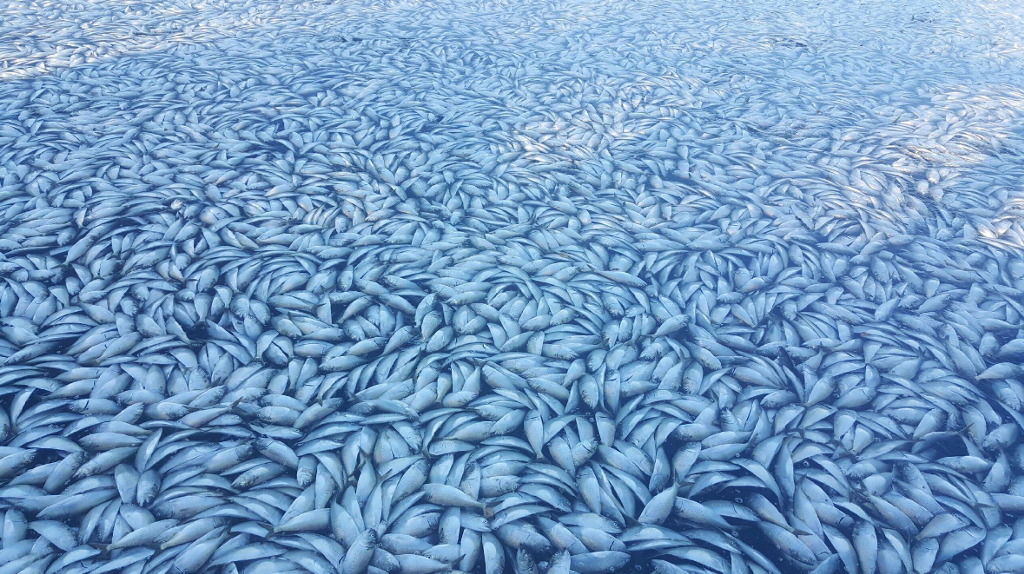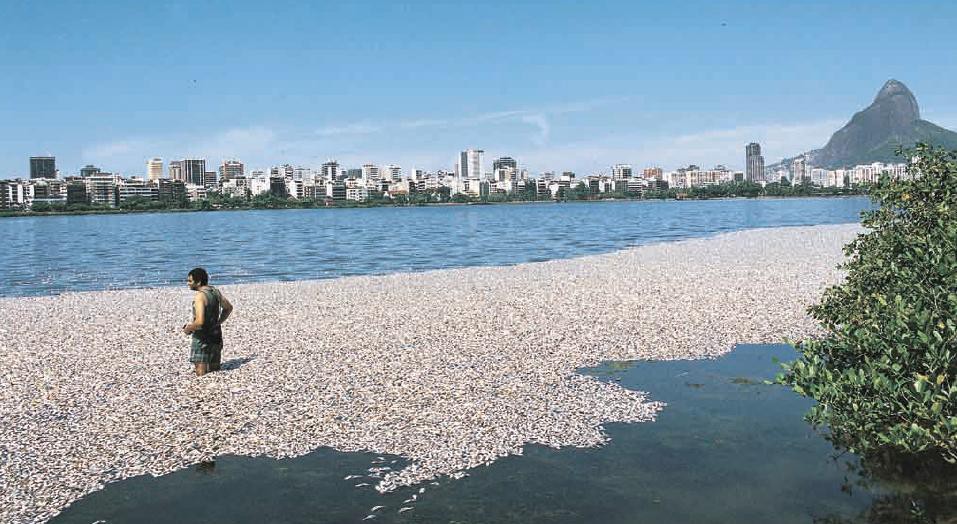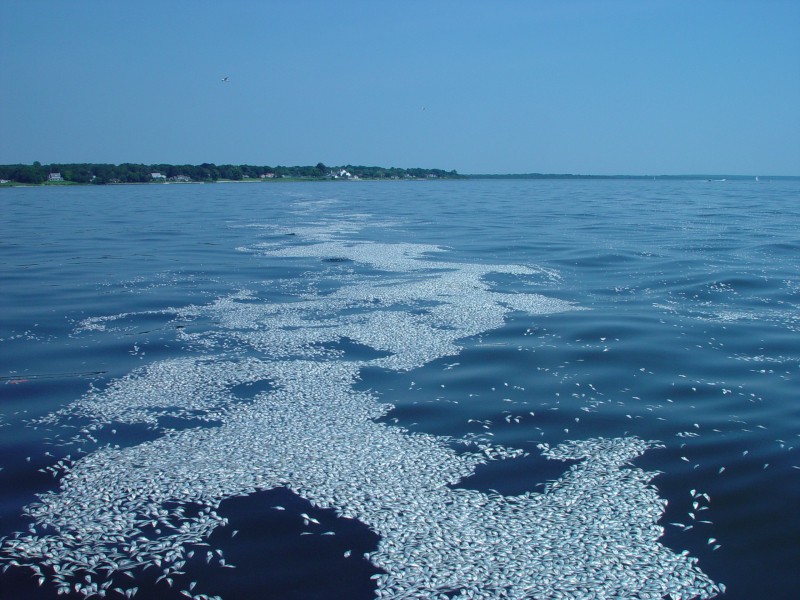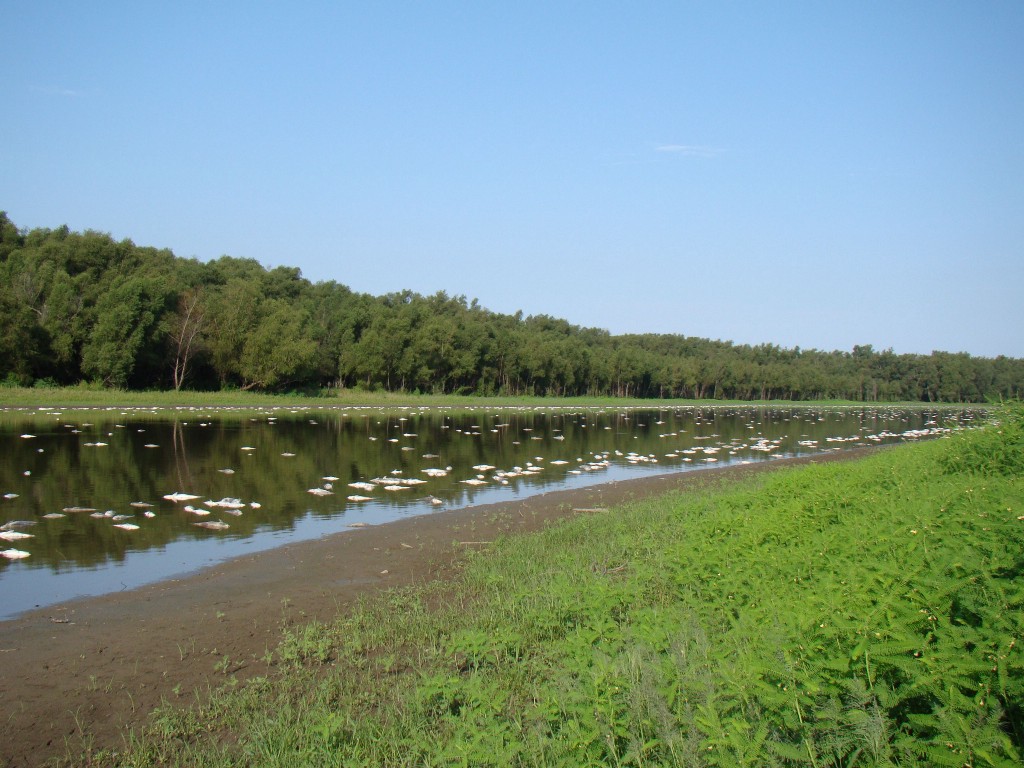Why Is This Fish Kill So Beautiful?
Death, tessellated.

Do you know what a fish kill is? It’s when a large population of wild fish dies in unison and all of their bodies just float there, smelling. Sometimes it’s because of pollutants, but health factors like water temperature, oxygen levels, and the tide can also do them in.
Massive fish kill clogs Shinnecock Canal. Find out why this happened. https://t.co/KfI5TE22Kn Photo by Amy Beth Stern
— @EHStar
This week, in Hampton Bays, NY’s Shinnecock* Canal, thousands of bunker fish (a bait fish used in lobster traps) appeared dead in the water overnight. Initially people were like, “The environment is over!” and “Trump’s presidency has ushered in the end of days!” which, yes, but logistically what experts think happened is the bunkers were chased into the canal by a school of predator fish, and then the canal closed for the night, locking them inside. Crammed into a small space with limited oxygen flow, the school eventually ran out of breathable water and suffocated en masse, holding each other in their final moments like that elderly couple on the bed in Titanic. When the canal opened in the morning, all the water came rushing out, and with it… so many dead fish.
I bring all of this up because a) it is fun to learn new things, but also b) the photos of the dead fish are really beautiful. Something about the repetition of borderline identical shapes over and over again in a place they don’t belong is soothing. Like when Buddhist monks do elaborate sand art and then destroy it when they’re done as a comment on impermanence and the value of creating anyway. “Here is a remarkable visual, and it will only exist briefly, but that is fine—you will have the image in your brain and maybe you will reflect on how it got there.”
This is pretty disturbing...this was the Shinnecock canal this morning
It made me wonder: Are fish kills always this… lovely? Or is this week’s a standout example? From what I can tell, it looks like the answers are no and yes. The two most important factors seem to be the number of fish we’re dealing with in such a small space. News12 Long Island has described the school as “massive.”
If you have a massive amount of fish in a bigger space, like a river, they sort of cling to the shoreline like seaweed and beer cans do. It skips the “art” phase and rockets right into “icky.”

And when it comes to the ocean, even a huge pocket of fish can end up looking like plain ol’ bubbles from a boat.

Now let’s say you have a bigger fish. Maybe the impact of that visual would be stronger because you can really see their bodies? Evocative! But from what I can tell, that’s another dead end. The bigger the fish, the less poetic things get. Here is a river fish kill that happened after a drought caused too much water loss, and I think we can all agree that one hundred big dead fish doesn’t quite provide the same stunning image that seven dillion tiny dead fish piled on top of each other does.

So it would appear the aesthetic requirements for a photogenic fish kill are: small fish, small area, lots of fish. An unlikely combo. And one that’s probably best facilitated by a man-made obstruction to a fish’s natural behaviors, like a canal or a decorative pond.
So while what happened in Hampton Bays this week isn’t necessarily a sign of intensifying climate change, or our president-elect’s power to enact large-scale catastrophe, it is a reminder that we can be (and often are) quite dumb simply by going through our days. And that our decisions about things like moving a boat can have very real repercussions for lives that seem totally unrelated, even if we don’t realize it.
Damn. Fish kills.
______
*hehe
